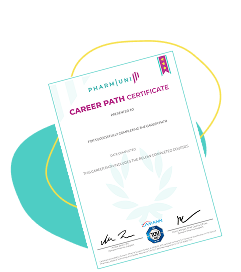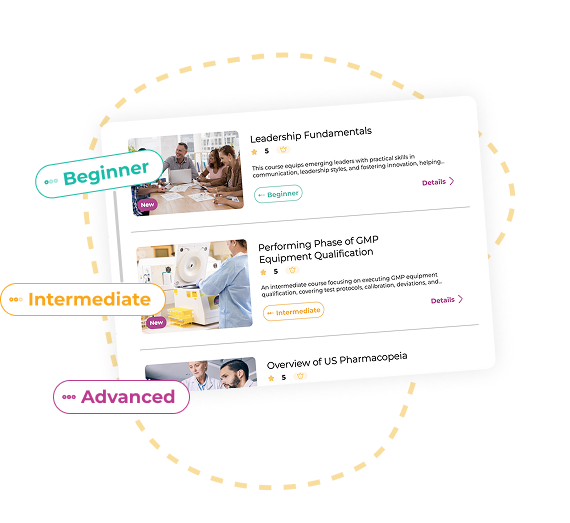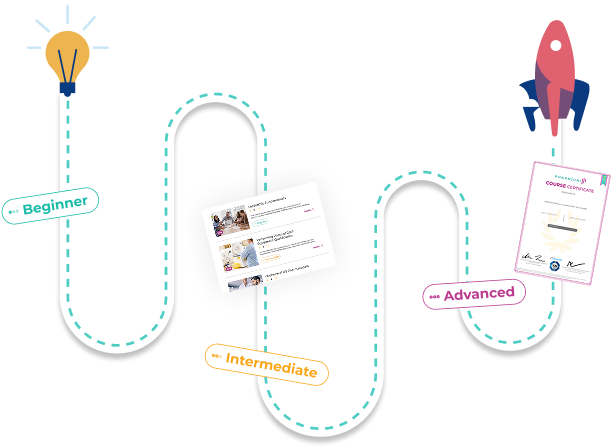Unlock the potential of your career in the Pharma industry with our online courses and qualifications.

Pick a career path, follow its guided course roadmap, and secure industry-verified credentials in a few months.

Earn career credentials from industry leaders that demonstrate your expertise.
Master GMP & QMS with an ISO 9001-certified provider.

Build inspection-readiness, strengthen compliance processes, and fast-track your QA career through bite-sized lessons, real-world CAPA case studies, and instant certificates—available on flexible monthly or cost-saving yearly plans.

Every public Trustpilot review to date is 5-star.
40 000+ users in 152 countries have taken Pharmuni courses since launch.
courses are built by Zamann Pharma Support, an ISO 9001-certified quality management provider founded in 2017 in Lampertheim, Germany.
Hundreds of graduates share new Pharmuni certificates on LinkedIn every month, boosting their CV and visa applications.
Partner institutions include Hochschule Bremen.
Zamann’s ISO 9001-certified experts train teams at many of Europe’s leading pharmaceutical manufacturers.
FDA drug-sector warning letters jumped to 190 in FY 2024—double FY 2022—with most citing GMP system failures.
The 2023 revision of EU GMP Annex 1 makes a site-wide Contamination Control Strategy mandatory, forcing sterile manufacturers to expand QA headcount.
Best-in-class pharma plants spend 14× less on “cost of poor quality” than the median site—so companies are investing heavily in trained QM teams.
500 + open QA-manager vacancies are listed on Indeed, and U.S. pharma QA managers earn ≈ $130 k–$136 k per year on average.
Annex 1’s 2023 overhaul and its new Contamination Control Strategy already demand fresh training across every sterile site.
Off-site GMP seminars still list at £1 500+ per seat, before travel or downtime.
QA manager listings routinely ask for 3-5 years’ CAPA & validation know-how, locking newcomers out of roles.
80% of adult learners favor flexible, bite-sized mobile study over day-long lectures.
80% of pharma firms say they struggle to hire qualified QA talent, and shortages are forecast well into 2030.
Pharmuni’s catalogue spans GMP foundations, including an ISO 9001 compliant Introduction to GMP, and specialist topics such as Change Control Management, GMP Audit Readiness, and advanced CAPA effectiveness. Each course is created by Zamann Pharma Support auditors and offers self-paced lessons, instant shareable certificates, and LinkedIn-ready proof of completion.


Our two guided career paths—GMP Basics for newcomers and Quality Assurance Specialist for rising QA leaders—sequence the exact courses you need in the right order, so you always know what to learn next, earn stackable certificates, and reach job-ready competence faster.
Pharmuni Premium turns learning into a career path with 50+ courses, AI tools, and career coaching to get you hired.
50 + expert-led pharma courses & quizzes
Industry-recognised certificates issued under an ISO-9001 quality system
Monthly VIP career coaching
AI-powered Skill Tree
Pharma-focused résumé & cover-letter builders
Mobile-friendly, 100 % self-paced platform



Pharmuni Premium gives you 50+ industry-aligned courses, credentials, VIP coaching, job tools trusted by professionals and more—for less than the cost of a single in-person training session.
Monthly: €39.99/mo
Annual: €33.25/mo (Save €80.88 yearly)
(most popular with immigrants)
We use cookies to improve your experience on our site. By using our site, you consent to cookies. Privacy Policy
Manage your cookie preferences below:
Essential cookies enable basic functions and are necessary for the proper function of the website.
These cookies are needed for adding comments on this website.
Google Tag Manager simplifies the management of marketing tags on your website without code changes.
These cookies are used for managing login functionality on this website.
Statistics cookies collect information anonymously. This information helps us understand how visitors use our website.
Google Analytics is a powerful tool that tracks and analyzes website traffic for informed marketing decisions.
Service URL: policies.google.com (opens in a new window)
Clarity is a web analytics service that tracks and reports website traffic.
Service URL: clarity.microsoft.com (opens in a new window)
Marketing cookies are used to follow visitors to websites. The intention is to show ads that are relevant and engaging to the individual user.
Facebook Pixel is a web analytics service that tracks and reports website traffic.
Service URL: www.facebook.com (opens in a new window)
LinkedIn Insight is a web analytics service that tracks and reports website traffic.
Service URL: www.linkedin.com (opens in a new window)
You can find more information in our Privacy Policy and Privacy Policy.